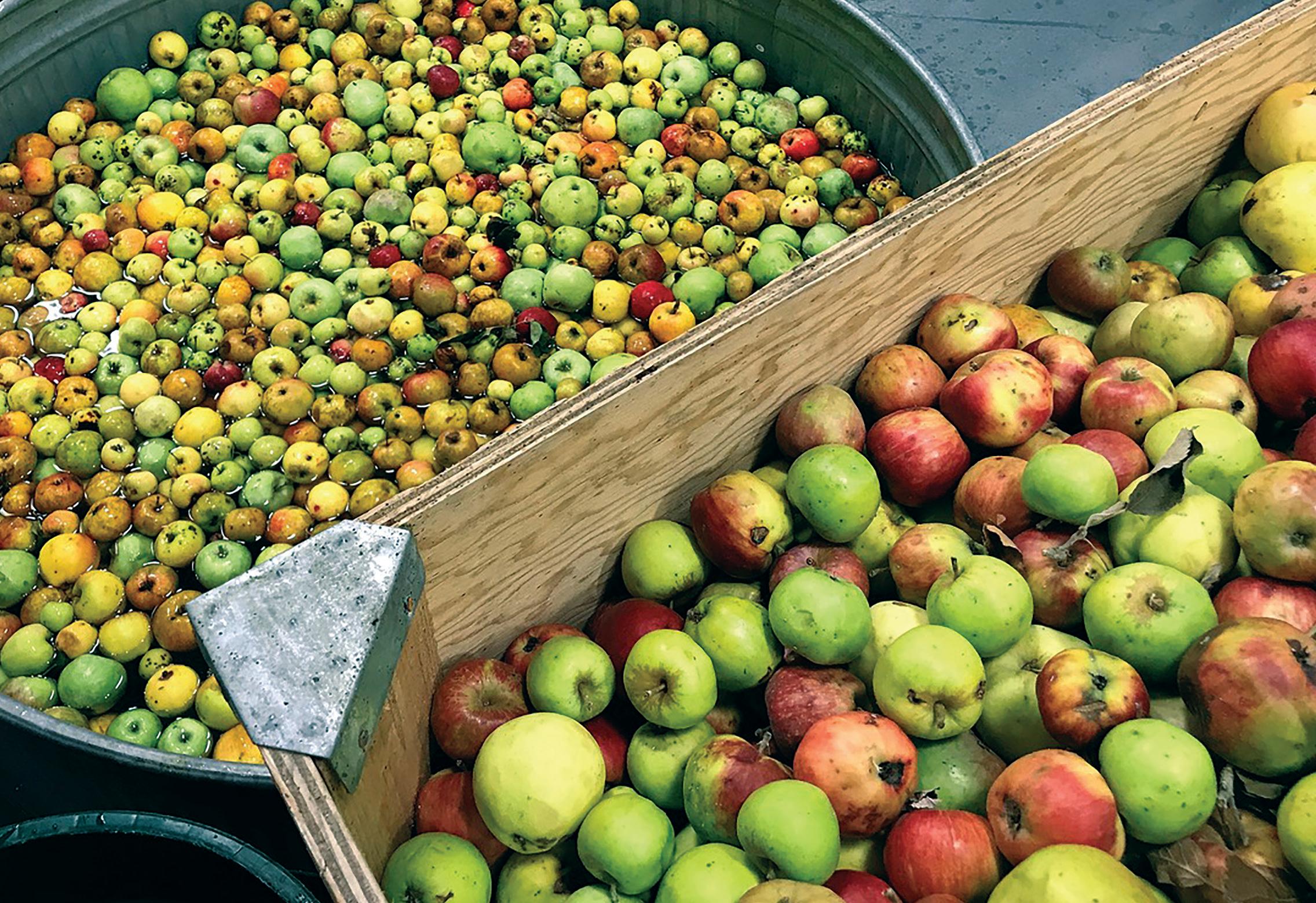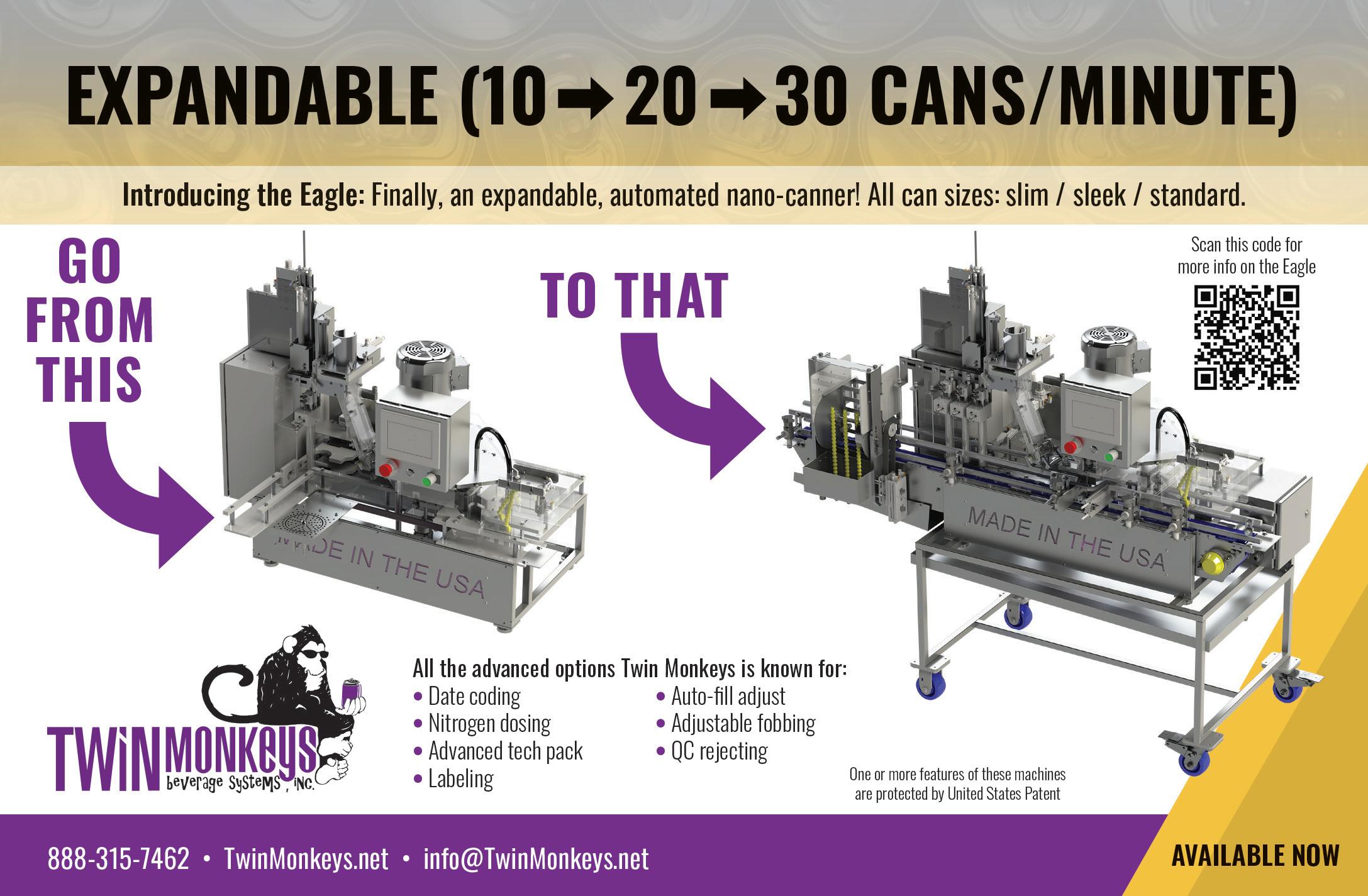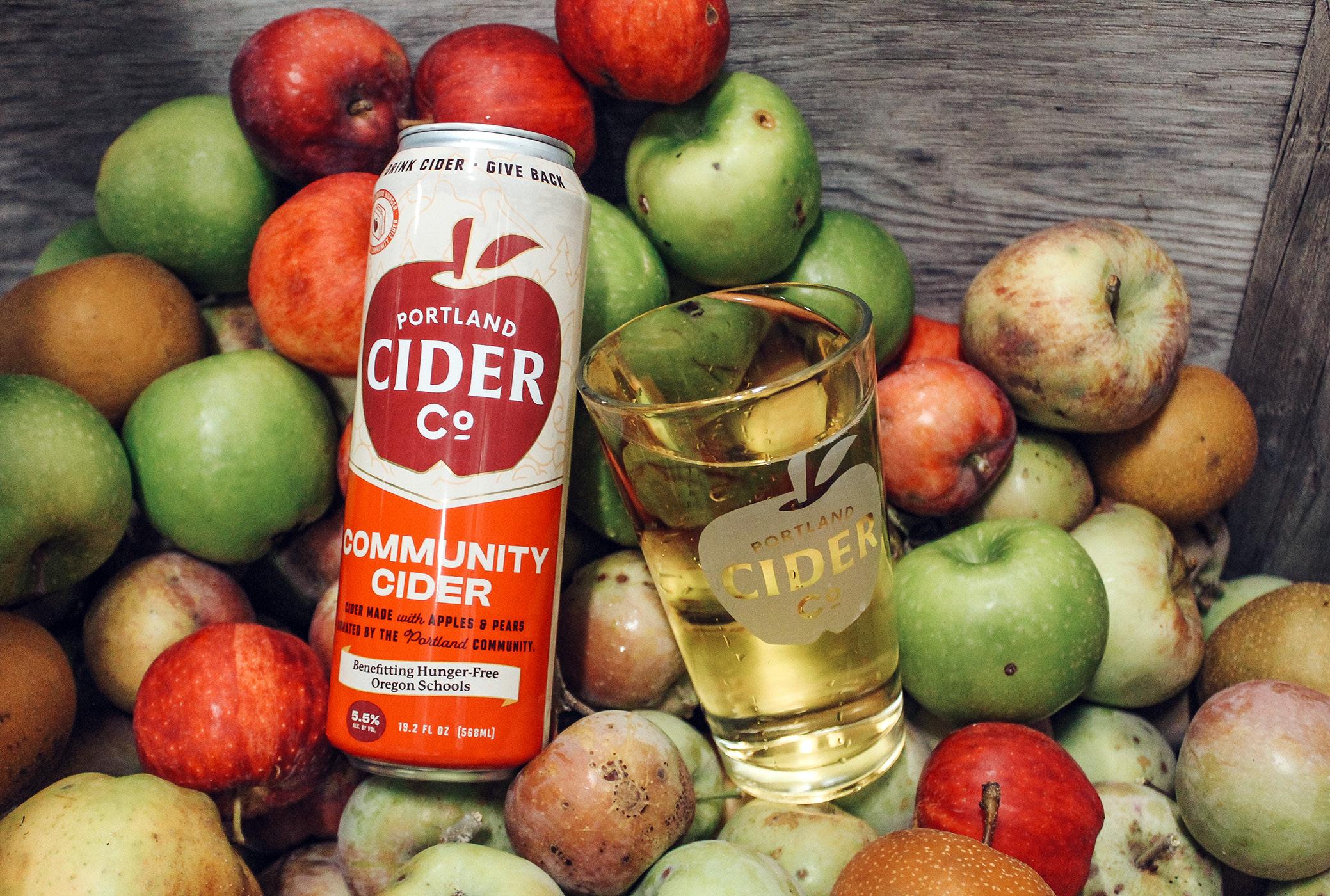
7 minute read
The Return of Community Ciders
By: Becky Garrison
In the Pacific Northwest, some cideries take local apples and use them to create community cider-based ciders, with the profits often donated to a designated local charity. Following are some examples of PNW cideries' community cider programs.
Art+Science (Sheridan, Oregon)
While Kim Hamblin sees quite a bit of fruit go to waste, she also observes how people tend not to mind picking fruit, especially if it goes to a good cause. Launching a community cider program was a natural fit, given her focus on foraging. After launching this program in 2022, her hopes were dashed with a very low yield because of a flukish April snow that affected blossoms and pollinators. As they are just beginning this program, they have yet to receive enough apples to make a cider, though she remains optimistic that the 2023 harvest will be significantly better. Once she has a cider in hand, she plans to donate to her favorite local groups, such as the community campus for their music program, the food bank or a local arts group. "It might be fun to have a list and let contributors pick their favorites," she reflects.
Lockhorn Hard Cider (Bozeman, Montana) - Owner Anna Deal loves the idea of turning something that would otherwise go to waste into something valuable, like great-tasting cider. Lockhorn Hard Cider planted an orchard five years ago with the hopes of growing cider apples to complement their cider production. Soon, they realized there was a “mature orchard” full of an incredible variety of heirloom varietal apples scattered throughout the backyards and homesteads of the Gallatin Valley.
When it announced it was collecting excess backyard apples to press into cider, the community responded with 14,000 pounds of apples that produced 1,000 gallons of cider. Subsequent years have been more challenging, with hard frosts in the fall before the trees are dormant, which damages next year's bud, as well as snow and wind during blossom.
People bring apples from their backyards to the Cider House in the fall, which they trade for a pint or can of cider for every 25 pounds of fruit. In addition, the Deals and volunteers help pick fruit for people who cannot pick themselves. "It has become a really beautiful fall tradition going back to these trees and small orchards with community members who have become friends to pick apples each fall. Conversation and the smell of apples in the golden fall sunshine is really magical," Deal opines.
. Currently, Lockhorn partners with three local non-profits: Haven Montana (which provides domestic abuse support), the Gallatin Valley Watershed Council and the Bozeman Symphony. So far, it has raised nearly $3,000 for these local groups, with volunteers from each group helping pick apples when they can.
Madrone Cellars & Cider (Friday Harbor, Washington) - According to Shaun Salamida, co-owner and winemaker, Madrone’s community-sourced cider program evolved naturally by connecting and talking with people who had old trees or knew local landowners who did. With the absence of land, it was driven to connect with locals who had abandoned orchards or orchards where there was just too much fruit for a single family to utilize. They pick about 80 percent of the apples themselves, as the old orchards are large, with even standard trees requiring special ladders. The rest are picked for them by generous property owners.
Madrone Cellars & Cider has partnered with a local organization called the San Juan Islands Pomona, which aims to preserve, identify and eval- uate local heritage varieties. Through this partnership, it has been able to help preserve and expand the culture of local apple and pear varieties and help restore old heritage orchards in the San Juans. So far, it has received scionwood from local heritage varieties to propagate about 30 trees.
Since the program's inception, it has grown from working with five local landowners to around 20. When it started, it was easy to jump around and get the apples without much difficulty. As it added more orchards, Salamida found that Madrone needed to set up charts and a calendar so it could schedule the picks. Also, as most picks are small and come in staggered throughout the harvest season, it had to find a way to press small lots.
As it are only a two-person operation, its production was not impacted during COVID since apples could be dropped off or picked up using appropriate safety measures. With its tasting room and local restaurants closed, it had to pivot to grocery store and delivery sales. "There was a definite negative impact on our sales during that time, as most customers want to try their craft beverage before purchasing," Salamida notes.

Meriwether Cider (Boise, Idaho) - Since one of Meriweather Cider's core company values is the community, it jumps on anything it can do to get closer and involve the local community, as well as help the area's local agriculture and fruit trees.
After launching its first Community Crush in 2016, it continues to issue an annual call to action to the local community through its website, social media and a press release to local news sources. Folks bring apples to the facility for about a month in August. Meriweather hosts a "Crushing Party" where folks come to help wash, crush and press the apples. In particular, children especially loved helping out. About a month later, it hosts a "Drinking Party."
Initially, Meriweather donated all proceeds to the Treasure Valley Food Coalition, a locally based non-profit focused on healthy and sustainable food production. During COVID, this organization went under, and Meriweather Cider did not do a Community Crush in 2020 or 2021. When it brought the program back in 2022, it donated the proceeds to The Lost Apple Project, a non-profit that finds, identifies and protects wild apple varieties.
Portland Cider Company (Clackamas, Oregon) -
As a two-person operation, founder Jeff Parrish and his wife, Lynda, wanted to create a community cider program but lacked time to make that happen. Then in the spring of 2016, they moved into their current location and hired staff to help them with marketing and events. Armed with the resources to give this program a start, they launched Portland Community Cider that fall. Since 2018, they've partnered with Hunger Free Oregon in this venture.
Despite COVID restrictions, they were able to remain in full operation and continue their community cider program. Their donations exploded in 2020 and 2021, a fact Parrish attributed to the fact that with so many people working from home, there was simply more time for them to harvest apples. They established a no-contact process for dropping off the apples and pears, and the community responded in a big way. Also, their large open warehouse was akin to working outside due to its airy space and constant ventilation. In addition, all of their marketing and sales staff transitioned to primarily working from home.
With over 100 varieties of apples available in the Greater Portland area, they have a wide range of fruit available. Their 2022 community cider was unique, as the percentage of pears donated appeared to be higher than in years past, which changed the character of the cider. Also, their cidermakers decided to use Scottish ale yeast to ferment the juice this year instead of wine yeast.
Seattle Cider (Seattle, Washington) - While apples are at the center of what Seattle Cider does as a company, it is not an orchard-based cidery. Its production facility and tasting room are located in SODO, one of the more industrial areas of Seattle. But as Maura Hardman, PR and marketing manager, observes, "Partnering with City Fruit since 2014 affords us an opportunity to keep our cidermakers connected with the most important ingredient we use."
In 2015, Seattle Cider took City Fruits' harvest viability from 68 percent to 98 percent by creating a product that benefited from the use of crab apples and other apples that were not fit for donation to local food banks and couldn't be used for City

Fruit's CSA program. To date, its largest remaining harvest was a little over nine tons of upcycled fruit in 2016.
All the apples used in making City Fruit Cider are harvested within the urban canopy of Seattle, from community food forests to neighborhood backyards. It even presses the apples in-house at the cidery, so from harvest to ferment, City Fruit is truly a "Seattle cider."
When the partnership first launched, the cider was available at a few select grocery stores and in the tasting room, The Woods. City Fruit is now available in the SODO tasting room and online, shipping directly to consumers in 39 states. Since the start of the program, Seattle Cider has donated $18,500 to City Fruit.
The quantity of each varietal changes from year to year, so each City Fruit Cider is unique. As Hardman states, the company plans to release the cider on Earth Day, which lines up nicely with City Fruit's mission. "It's a great time for us to share the story of our continued partnership with City Fruit and help bring visibility to City Fruit's important work in stewarding and harvesting from urban fruit trees to nourish people, build community and protect the environment."
Western Cider (Missoula, Montana) - Western Cider founder Matthew LaRubbio decided to launch a cider program based on his experience as a caretaker at a historic ranch in Missoula, MoonRandolph Homestead, which had a 130-year-old orchard. As part of the program, they would pick the fruit and press it at the annual fundraiser every year. "These connections to the places we harvest fruit is integral to our experience in making cider and has significance to our customers that drink the cider," he observes.
Since the programs' inception, it has partnered with the Great Bear Foundation, which works to mitigate the confrontations between humans and bears in the urban wildlife interface. The Great Bear Apple Drive brings people from all around their region. A five-dollar voucher for cider is given for every forty pounds of apples, with 20,000 pounds of apples collected during their first year.
Moving forward, Western Cider plans to use their community cider primarily for making ice ciders through a process known as cryoconcentration. This process involves freezing apple juice in a suspended container, allowing the sugars to slowly separate and drain into a lower vessel, and then fermenting that very sweet juice into a high-ABV cider. Western Cider ages it in oak barrels for one year and matures it in kegs for another year. The result is a plush aperitif clocking in at 16 percent ABV.
The Growth of Community Cider Programs
Leadbetter encourages other cideries to just do it. "If you have even a small capacity macerator and press, you can have a community crush!" As Parrish observes other cideries outside the Northwest starting their community cider programs, he stresses how you can't go wrong with engaging with your local community. "I don't think there's only one way to make a program like this work, so I would encourage any cidery wanting to make a community cider to follow a path that feels good to them and fits their values and capabilities."










